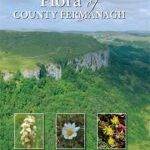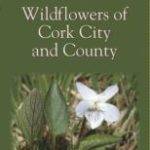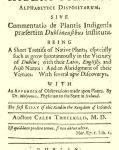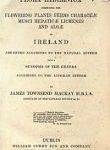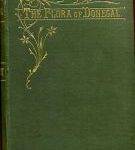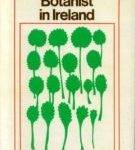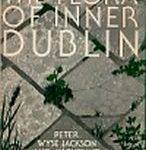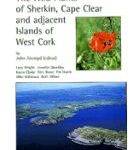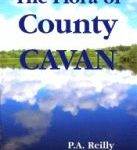A brief history of the discovery of the Irish Flora
The first Irish flora was published by the Rev. Dr . Caleb Threlkeld (1676-1728), a dissenting cleric and Physician. Threlkeld was a native of Cumberland, and arrived in Dublin in 1713. His remarkable work, titled Synopsis Stirpium Hibernicarum Dispositarum sive Commentatio de Plantis Indigenis praesertim Dublinensibus instituta also subtitled as:- A Short treatise of Native Plants, especially such as grow spontaneously in the vicinity of Dublin, with their Latin, English and Irish Names: And an abridgment of their Vertues, With Several New Discoveries.
As the sub-title suggests this was no mere herbal or flora, but an opportunity for Dr. Threlkeld to dispense opinions upon “Heathenish Magick”, the “Blessings of the English Government” the “confounding” of knowledge by other botanists, the debauchery resulting from “Excess in Liquor” and so forth. Being pre-Linnaean, Threlkeld’s flora contains many unique names created by the author himself, including Muscus inatus cranio humano – moss growing on a dead man’s skull.
Walter Wade, 1804. Plantae rariores in Hibernia inventae; or habitats of some plants, rather scarce and valuable, found in Ireland; with concise remarks on the properties and uses of many of them.
K. Baily published The Irish flora; comprising the phaenogamous plants and ferns, anonymously in 1833, reprinted in 1846.
James Townsend Mackay published Flora Hibernica in 1836: the flowering plants ferns Characeae Musci Hepaticae Lichenes and Algae of Ireland arranged according to the natural system with a synopsis of the genera according to the Linnaean system. (LINK TO THE VERSION ON ARCHIVE.ORG – SEE RESOURCES PAGE FOR LINK)
Mackay was responsible for the vascular plants and charophytes, Thomas Taylor for the bryophytes and lichens, and William Harvey for the algae.
T. Allin published the first county flora, with the Flora of Cork in 1883: The flowering plants and ferns of the county Cork. Walter Wade’s Dublin flora of 1794 was an ambitious project for which only volume one was printed.
Samuel Stewart and T.H. Corry published A flora of the north-east of Ireland including the Phanerogamia, the Cryptogamia vascularia and the Muscineae in 1888. A 2nd edition was edited by Praeger and Megaw in 1938, and a 3rd edited by Paul Hackney appeared in 1992.
Alexander Goodman More, later to become keeper of Natural History at the National Museum, and David Moore, director of the Royal Botanic Gardens, Glasnevin, published Contributions towards a Cybele Hibernica, being outlines of the geographical distribution of plants in Ireland in 1866. This was the first attempt to record the distribution of plants in Ireland across 12 sub-divisions.
(ORIGINAL PDF UPLOADED HERE FROM GOOGLE BOOKS – LINK TO G BOOKS ORIGINAL INSTEAD)
Robert Ll. Praeger Flora of Armagh 1893.
Nathaniel Colgan later the author of the Flora of the county Dublin (1904) and Reginald Scully, (Flora of County Kerry, 1916) produced the 2nd edition of Cybele Hibernica in 1898.
LINK TO THE ARCHIVE.ORG VERSION OF ABOVE
Henry Chichester Hart Flora of Howth 1887. Flora of the County Donegal or list of the flowering plants and ferns with their localities and distribution 1898.
LINK TO THE ARCHIVE.ORG VERSION OF THE ABOVE
Alexander Stewart and Corry Flora of the north-east of Ireland (1858). 2nd edition 1938, third edition Paul Hackney 1992.
Robert Lloyd Praeger (1865-1953), born in Hollywood county Down, was the greatest of Irish Field Botanists. From 1897 to 1900 he conducted extensive field work over the whole of Ireland, covering 5,000 miles on foot. Dividing Ireland into 40 vice-counties he recorded the detailed distribution of the entire vascular flora. The finished catalogue, published in 1901, was Irish Topographical Botany, or ITB as it is more familiarly known, a landmark work in the history of Irish Botany.
A tourist’s flora of the west of Ireland published in 1909 was a remarkably novel approach of writing a discursive account of the flora and topography ‘of over 100 selected areas, large and small, lying within the district’.
This was followed by The Botanist in Ireland; A Geological, topographic, climatic and floristic summary of Ireland, that begins with the immortal words “IRELAND is a pleasant country for the botanist.” This uses a similar approach to the tourist’s flora for the whole of Ireland, including a complete census catalogue updated from Irish Topographic Botany.
LINK TO PRAEGER ON JSTOR CHECK RESOURCES PAGE FOR URL
David Allardice Webb An Irish Flora 1934. Now in its 7th edition (1953, 1959, 1963, 1967, 1977, 1996), this flora remains the most useful pocket guide to the Irish flora.
The flora appeared in its eighth edition as Webb’s An Irish Flora in March 2012, edited by John Parnell and Tom Curtis with illustrations by Elaine Cullen.
Brunker Flora of County Wicklow 1950.
Mary J.P. Scannell and Donal Synnott Census Catalogue of the Flora of Ireland 1972. 2nd edition 1987.
Evelyn Booth Flora of County Carlow 1979.
David Allardice Webb and Mary Scannell Flora of Connemara and the Burren 1983.
Peter Wyse Jackson and Sheehy Skeffington published the Flora of Inner Dublin. 1984
Donal Synnott produced an Outline of the flora of Mayo in 1986.
Seán Howard prepared a Flora of County Longford as an MSc. Thesis but this was not published (but has been made available here)
(LINK – SEE RESOURCES PAGE OR SITEMAP FOR URL)
J. Haron Flora of Lough Neagh 1987.
Third edition of the flora of the north-east of Ireland edited by Paul Hackney appeared in 1992.
Máirín Uí Chonchubhair in 1995 published Flóra Chorca Dhuibhne
John Akeroyd, Lucy Wright, Karen Clarke, Jennifer Shockley, Nick Rowe, Pat Hatch, Mike Robinson and Beth Milner The wild plants of Sherkin, Cape Clear and adjacent islands of West Cork.1996
1996 also saw the publication of the 7th edition of An Irish flora which appeared after David Webb’s death, coauthored with J. Parnell and D. Doogue. This edition has drawings by Holly Nixon.
Beesley & Wilde 1997 Urban Flora of Belfast
A new Flora of County Dublin was published in 1997 by the Dublin Naturalist Field Club, Edited by Declan Doogue and others
Paddy Reilly published the The Flora of County Cavan in 2001. Thus at the turn of the century just 14 vice-county floras out of the 40 have been published.
Sylvia Reynolds The Alien Flora of Ireland Published in 2002, covers the 920 alien plant species and hybrids found in Ireland since the beginning of the 19th century. This catalogue presents information on the status, first or earliest records, locations and literature records of all these taxa.
Paul Green’s Flora of County Waterford was published in 2008. The species accounts give a summary of the status, ecology, and distribution of 1,530 taxa recorded since 1746.
Ireland’s Wild Orchids – a field guide by Brendan Sayers and Susan Sex, (see details here…) was published in 2008. Within 5 months a second book, The Orchids of Ireland by Tom Curtis and Robert Thompson was published in 2009.
John Feehan’s The Wildflowers of Offaly (Offaly County Council), and Tony O’Mahony’s Wildflowers of Cork City and County (Collins Press) both appeared in 2010. The Flora of County Tyrone by Ian McNeill published by the National Museums Northern Ireland in 2010 brings the total vice-county floras published for Ireland so far to sixteen.
Wild Flowers of Ireland by Zoe Devlin, and The Wildflowers of Ireland By Carsten Krieger and Declan Doogue each appeared in 2011. Both are superbly illustrated books. John Akeroyd, Leander Wolstenholme & Jenna Poole published a Supplement to The Wild Plants of Sherkin, Cape Clear and adjacent Islands of West Cork (Species new to the islands, rediscoveries and significant extensions of known distribution.) which adds a further 35 new plants to the flora published in 1996, alongside a remarkable number of rediscoveries and important extensions of known local and Irish distributions.
The Flora of County Fermanagh by Ralph Forbes and Robert Northridge is certainly the heaviest county flora published to date and is lavishly illustrated.
This flora covers botanical field records over the past 200 years, with an emphasis on the period 1975 to 2010, when the major work was undertakne. All but the most common and the very rarest species are mapped. The book is greatly enhanced by the remarkably high quality photographs of landscapes and plant portraits by Robert Thompson and Hannah Northridge.
The Flora of County Limerick by Sylvia Reynolds also published in 2013 has accounts for over 1100 native and alien plants. Introductory chapters include accounts of the main Limerick habitats with their characteristic species, and an analysis of the overall flora. The Flora is the result of some thirty years of fieldwork and research by Sylvia assisted by her husband Julian Reynolds.


